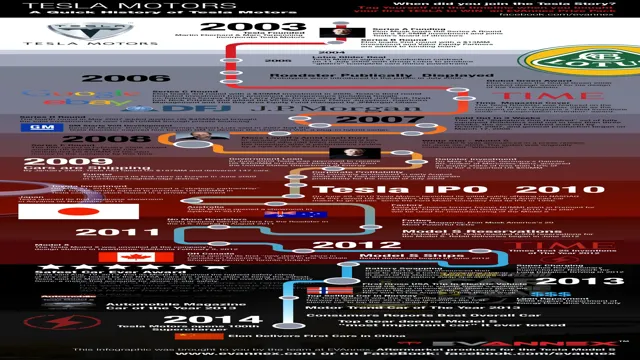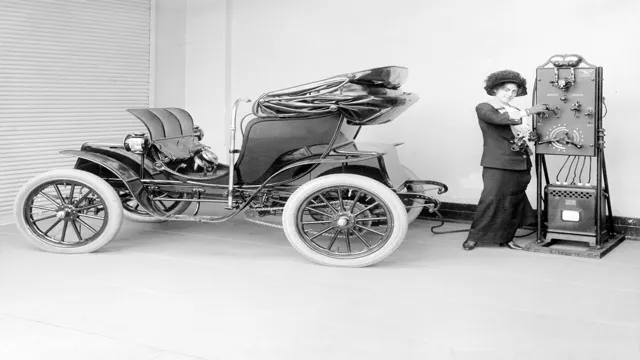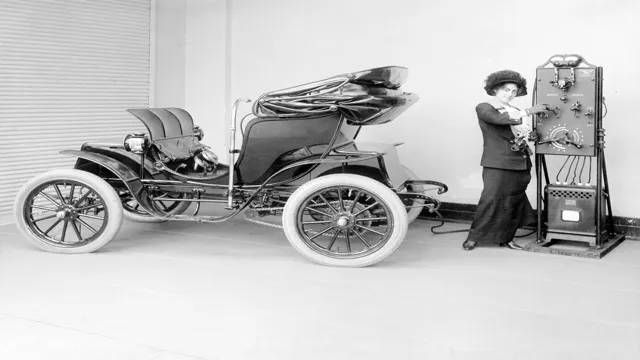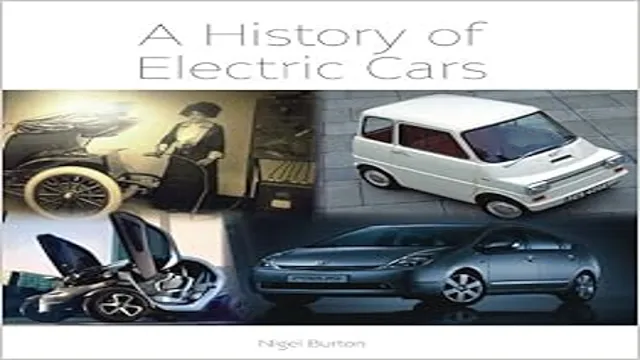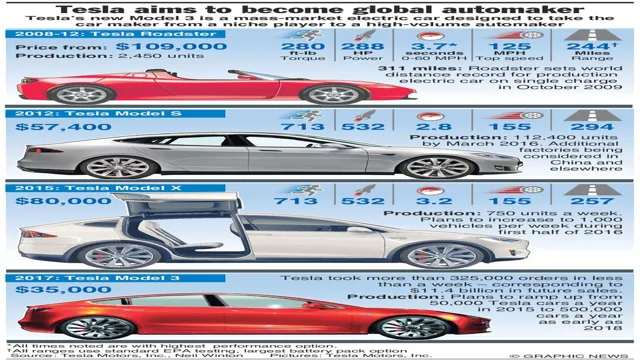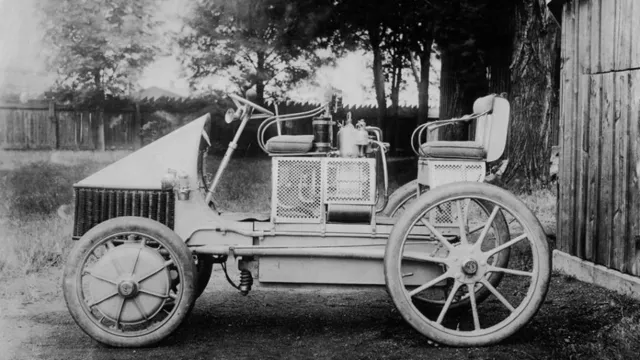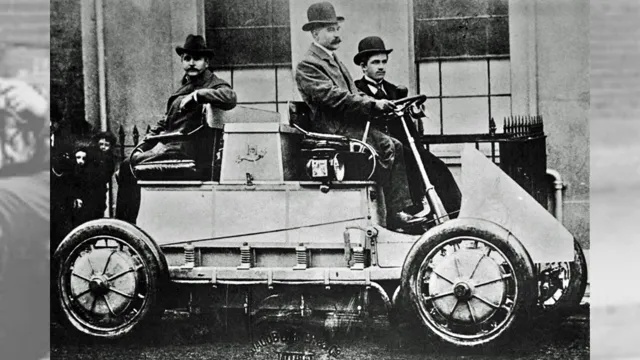The Electrifying Story of Tesla: The Revolutionizing History of Electric Cars
Electric cars have been in existence for many years but they only started gaining significant public attention in recent times. Amongst the few electric car manufacturers around the world, Tesla is a company that has been consistently making waves in the industry. Founded in 2003, the American-based company has brought a revolution to the automotive industry.
Elon Musk, the CEO of Tesla has always been a pioneer in the technology sector. The company started with the goal of manufacturing environmentally-friendly cars and gradually steered its way into the electric car market. Today, when we talk about electric cars, Tesla is the company that comes to mind.
In this blog, we’ll discuss the journey of Tesla’s electric car history and how it has transformed the entire automotive industry, from the early Tesla Roadster to the latest Tesla Model S Plaid. Let’s delve into the past, present, and future of the Tesla electric car revolution.
Origins of Tesla Motors
Tesla Motors was founded in 2003 by Martin Eberhard and Marc Tarpenning with the vision of creating electric sports cars that could rival gasoline-powered cars in performance. The first vehicle manufactured by the company was the Tesla Roadster, which was released in 200 However, the origins of Tesla Motors can be traced back to the 1990s when General Motors released an electric car called the EV
The EV1 was a popular car among environmentalists but was ultimately discontinued by General Motors due to lack of profitability. This inspired Martin Eberhard and Marc Tarpenning to create a new electric car company that would revolutionize the automotive industry. Their vision came to life with the creation of Tesla Motors, which rapidly gained popularity due to the high performance and eco-friendly nature of their electric cars.
Today, Tesla Motors is a major player in the automotive industry, leading the way in the development of electric cars and renewable energy technology.
Co-founders and Roadster production
The origins of Tesla Motors can be traced back to the partnership between Martin Eberhard and Marc Tarpenning, who founded the company in 200 The two shared a common goal of producing high-performance electric cars that were also environmentally friendly. They named their company after the famous inventor Nikola Tesla, who was known for his contributions in the field of electrical engineering.
In 2004, Elon Musk joined the team as an investor and quickly became involved in the company’s operations. With his entrepreneurial skills and vision, Musk took Tesla to the next level by developing the Roadster, the company’s first production car. The Roadster was a revolution in the world of electric cars, offering speed, range, and performance that had never been seen in an electric car before.
It was a game-changer in the industry, paving the way for future electric cars, including Tesla’s own models that are now some of the most popular and sought-after electric cars in the world. Without the vision and drive of Eberhard, Tarpenning, and Musk, Tesla Motors would not be the company it is today, revolutionizing transportation and setting new standards for sustainable transportation.

Luxury Model S and Model X
When Tesla Motors was founded in 2003 by a group of engineers who wanted to show the world that electric cars could be just as good as gasoline-fueled cars, many people were skeptical. However, Elon Musk, the company’s CEO, had a clear vision of what he wanted to achieve: to accelerate the world’s transition to sustainable energy. The company’s first car, the Roadster, was a luxury sports car that proved that electric cars could be stylish, powerful, and fun to drive.
But it wasn’t until the introduction of the Model S in 2012 that Tesla truly made its mark on the auto industry. The Model S was the world’s first premium electric sedan, with a range of over 300 miles on a single charge. It was a game-changer that forced other car manufacturers to take notice and accelerate their own electric vehicle programs.
Today, Tesla offers two luxury models, the Model S and Model X, that continue to push the boundaries of what is possible with electric cars. With their sleek designs, cutting-edge technology, and impressive performance, these cars are evidence that Tesla’s vision of the future is becoming a reality.
Model 3 and Beyond
The Tesla electric car history is a fascinating one, and it all started with the Roadster. This sports car was a game-changer for the electric vehicle (EV) industry when it was introduced in 200 Tesla went on to release the Model S, which was a full-size luxury sedan that offered unmatched range and performance.
But the real breakthrough came in 2017 with the launch of the Model This more affordable EV became a hit with consumers, and Tesla’s production ramp-up has been nothing short of astounding. In just two years, they were able to produce over 300,000 Model 3s, proving that EVs are becoming more mainstream.
But Tesla is not content to rest on its laurels; they are already working on the Model Y, a compact SUV, and a fully autonomous vehicle they are calling the “Tesla Network.” This company’s vision and determination have brought about significant changes in the auto industry, and they are showing no signs of slowing down.
Elon Musk’s vision for electric cars
Elon Musk has always been a driving force in the electric car industry, with his vision to make electric cars mainstream. With the introduction of the Model 3, his goal is closer than ever. The Model 3 is an affordable electric car that still maintains Tesla’s signature sleek, modern design.
It has a range of 250 miles on a single charge and can go from 0 to 60 miles per hour in just 3 seconds. But beyond the Model 3, Musk plans to continue pushing the boundaries of what’s possible with electric cars.
He’s hinted at developing a compact SUV, a pickup truck, and even a semi-truck. His ultimate vision is to create a world where all cars are powered by clean, renewable energy. It’s an ambitious goal, but with Musk leading the charge, it’s not hard to imagine it becoming a reality.
Challenges and successes
As Tesla continues to innovate, their Model 3 and beyond face both challenges and successes. One challenge that stands out is the intense competition in the market for electric vehicles. However, the Model 3 has seen incredible success, becoming one of the best-selling EVs in the world.
Tesla’s dedication to providing a sleek, high-performance electric car has paid off in spades, as consumers flock to the Model 3 for its impressive range and handling. Additionally, as Tesla looks to the future with its upcoming models, such as the Cybertruck and the Roadster, they will face the challenge of continuing to push technological boundaries while keeping their products accessible to a wider range of consumers. Nevertheless, with its current success and a dedicated fanbase, the future of Tesla’s EV models is bright.
Future plans and development
As Tesla continues to revolutionize the automobile industry, their focus on innovation and sustainability remains at the forefront of their future plans and development. The Model 3, which was released in 2017, was a game-changer for mass-market adoption of electric vehicles. However, Tesla’s vision for the future extends beyond this model.
They are working on developing new technologies to improve battery life, decrease charging times, and make electric cars more affordable for everyone. In addition, Tesla is also developing semi-autonomous and fully autonomous driving capabilities, with the goal of eventually achieving full self-driving capabilities. While there are still some regulatory hurdles to overcome, Tesla’s progress in the field of autonomous driving is impressive, and they are paving the way for the future of transportation.
Tesla’s recent announcement of the “Tesla Semi”, an electric semi-truck, is also a promising development for the future of sustainable transportation. With zero emissions and exceptional range, the Tesla Semi will not only reduce transportation-related carbon emissions but offers commercial transport companies a cheaper alternative which will help save on fuel costs. As Tesla continues to push the boundaries of what is possible, the future looks bright for both the automobile industry and the planet.
Impact and Sustainability
Tesla’s electric car history is one of the most remarkable achievements in the automotive industry. Tesla’s vision was to create sustainable energy transportation, and they have managed to achieve that through their electric cars. Tesla cars have revolutionized the way people view and use energy by providing clean and green transportation that is powered by electricity.
The first electric car was introduced in 2008, which was the Tesla Roadster. Since then, the company has launched several models, including the Model S, Model X, Model 3, and Model Y. The electric cars come equipped with advanced features, such as Autopilot, which enables them to drive partially on their own.
These cars are not only eco-friendly but also aesthetically pleasing and high-performing, providing a luxurious driving experience. In conclusion, Tesla has gone above and beyond to make electric cars a practical and sustainable solution for transportation. They have inspired other car manufacturers to venture into the electric car business, ultimately making the world a cleaner place.
Reducing reliance on fossil fuels
Reducing reliance on fossil fuels is crucial for the sustainability of our planet. Overuse of fossil fuels has led to the rise of greenhouse gas emissions, contributing significantly to global warming and climate change. It has also resulted in a decline in air quality, causing respiratory problems and other health issues.
The impact of reducing our reliance on fossil fuels is significant, both environmentally and economically. By transitioning to renewable energy sources, such as solar and wind power, we can reduce our carbon footprint and minimize our impact on the environment. Not only will this benefit the planet, but it will also create new opportunities for economic growth and job creation.
The transition towards sustainable energy will require a change in our mindset and lifestyle, but it is a critical step towards ensuring a sustainable future for our planet.
Innovations in battery technology
Innovations in battery technology are revolutionizing the way we power our world. With the increasing demand for sustainable and eco-friendly energy sources, it is crucial to develop batteries with a smaller environmental footprint and longer lifespans. In recent years, we have witnessed some impressive advancements in battery technology that have the potential to address these concerns and pave the way for a greener future.
One of the most significant impacts of these innovations is the reduction in our dependence on fossil fuels. The widespread adoption of electric vehicles (EVs) has driven research into more efficient and high-capacity batteries that can power these vehicles over longer distances, thereby reducing carbon emissions. Similarly, advances in energy storage systems, such as grid-scale battery installations, are enabling the integration of more renewable energy sources into our power grids.
This is because batteries can store energy produced during peak periods and release it when demand is high, making the entire system more reliable and less reliant on traditional energy sources. Moreover, innovations in battery recycling technology have made the extraction and recovery of valuable materials, such as lithium, cobalt, and nickel, more efficient and environmentally friendly. This reduces the amount of waste generated from old batteries and conserves natural resources, making batteries a more sustainable energy storage solution.
In conclusion, the impact of innovations in battery technology on sustainability is profound and will continue to shape the energy landscape for many years to come. With the development of more efficient and sustainable batteries, we can reduce our dependence on traditional energy sources, minimize environmental impact, and create a world that is cleaner and healthier for future generations.
Tesla’s influence on the automotive industry
Tesla has significantly influenced the automotive industry by providing a sustainable and innovative approach to the manufacturing and design of electric vehicles. Tesla’s impact on the industry can be seen through the growing demand for electric cars and the emergence of new electric car models from other car manufacturers. Tesla has revolutionized the electric car market by setting a new standard for battery range, performance, and design.
In addition, Tesla’s approach to sustainable practices has inspired other car manufacturers to incorporate eco-friendly production methods, including using renewable energy sources and reducing waste. With Tesla’s leadership, the automotive industry is transforming to become more sustainable and environmentally conscious. Tesla’s influence has been undeniable as it continuously pushes the boundaries of what is possible to create new technologies that benefit the environment, and help improve the future of transportation.
Conclusion
In conclusion, the history of the Tesla electric car is like a lightning strike of innovation, disrupting the traditional gas-guzzling automobile industry. With its sleek designs, cutting-edge technology, and eco-friendly mission, Tesla has harnessed the power of electricity to revolutionize the way we drive. As the world becomes more conscious of the impact of fossil fuels on the environment, Tesla’s visionary approach serves as a beacon of hope for a brighter, greener future.
So strap on your seatbelt and get ready for an electrifying ride towards sustainability!”
FAQs
Who founded Tesla Motors?
Tesla Motors was founded by Elon Musk in July 2003.
When was the first Tesla electric car introduced?
The first Tesla electric car, the Roadster, was introduced in 2008.
How has Tesla impacted the electric car industry?
Tesla has had a major impact on the electric car industry by increasing consumer interest in electric vehicles and pushing other car manufacturers to develop their own electric cars.
What is the range of the latest Tesla electric car?
The latest Tesla electric car, the Model S, has a range of up to 402 miles on a single charge.
